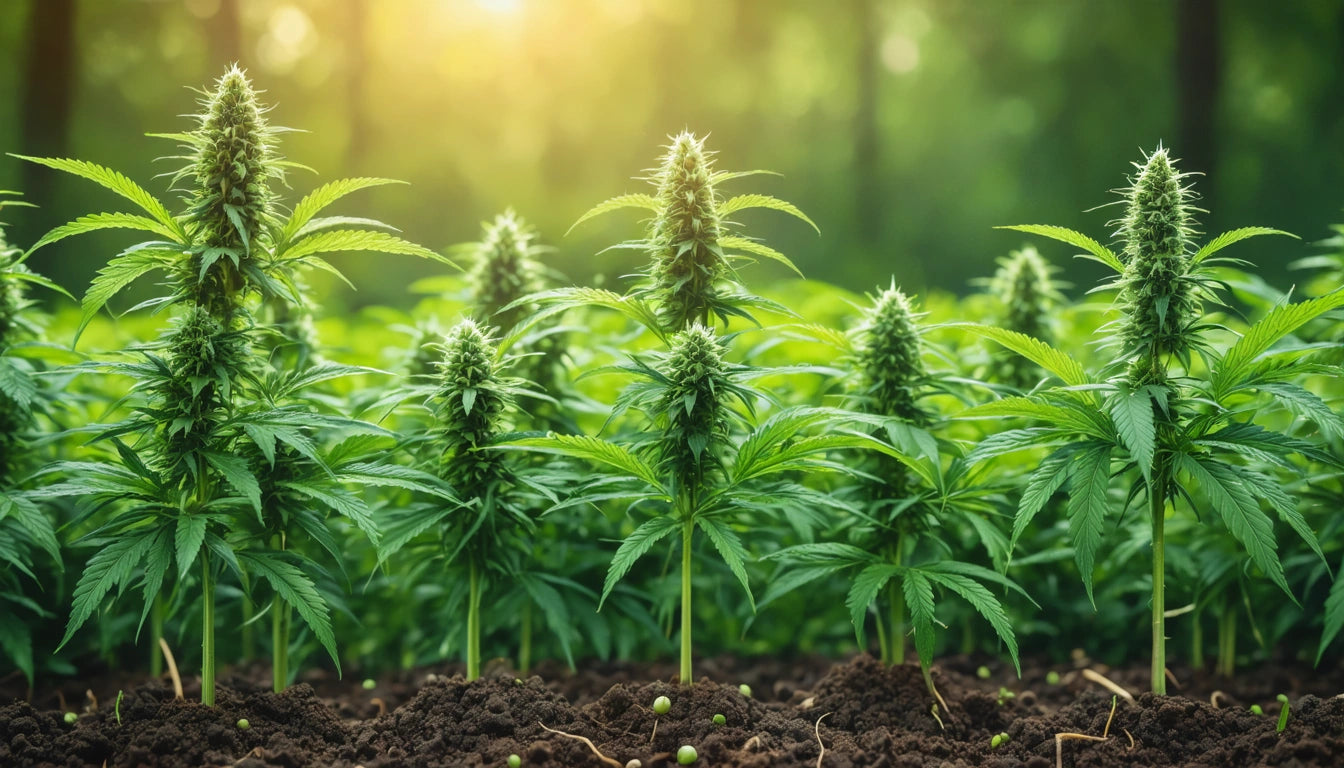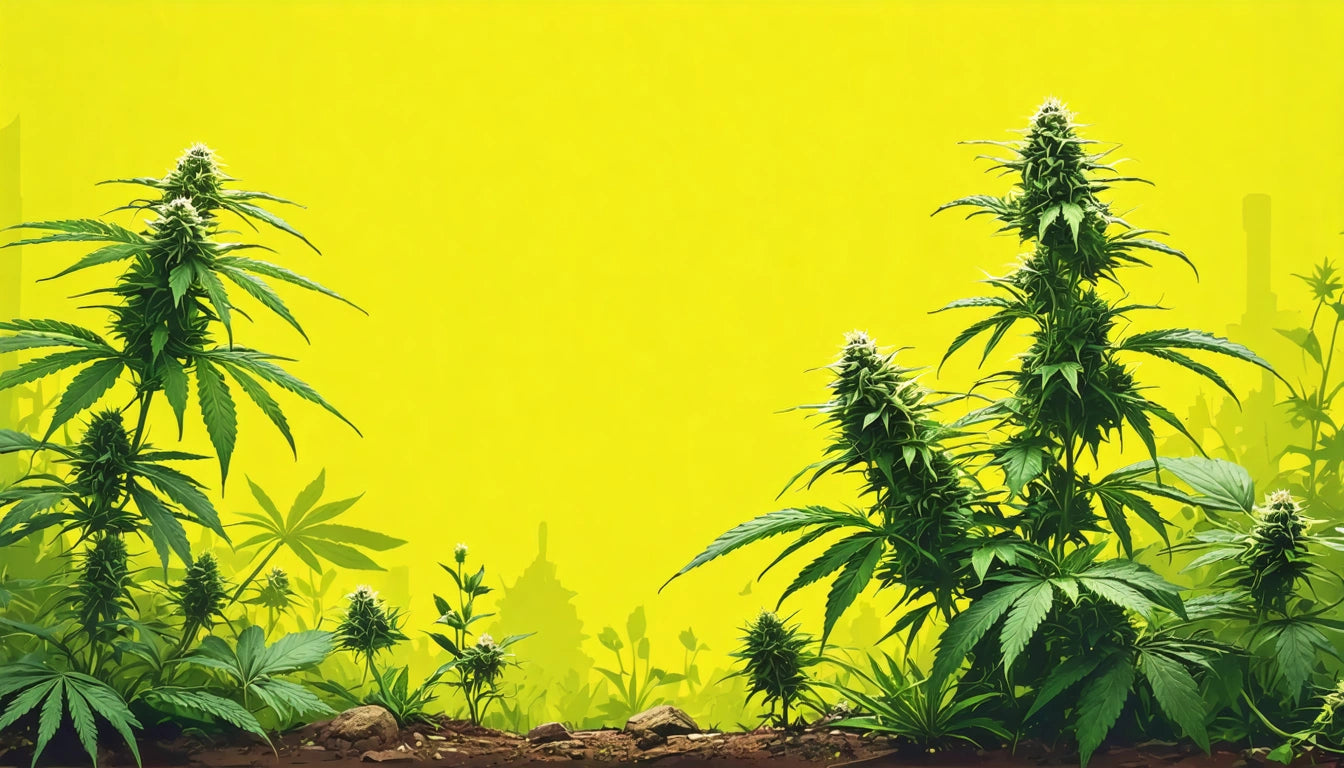A Comprehensive Guide to Growing and Harvesting Hemp
Hemp cultivation has experienced a significant resurgence following the 2018 Farm Bill, with farmers across the United States rediscovering this versatile and profitable crop. Understanding how to grow hemp properly and when to harvest it can make the difference between a successful yield and a disappointing season. This guide explores the complete lifecycle of hemp cultivation, from selecting the right location to implementing effective harvesting techniques.
Origins and Ideal Growing Locations
Hemp has a rich historical background that influences where it thrives today. The question of where does hemp come from has a fascinating answer: hemp originated in Central Asia, specifically in regions that now include parts of China and Mongolia. Archaeological evidence suggests cultivation began as early as 8000 BCE, making it one of humanity's oldest domesticated crops.
Today, hemp is grown across diverse global regions. When considering where hemp is grown commercially, major producers include:
- China (the world's largest producer)
- Canada
- France
- Chile
- United States (rapidly expanding since 2018)
For those wondering where can you grow hemp, the plant adapts to various climates but prefers:
- Well-drained, loamy soil with pH between 6.0-7.5
- Moderate rainfall (25-30 inches annually)
- Growing seasons with 108-120 frost-free days
- Temperate climates without extreme heat or cold
In the United States, where to grow hemp successfully includes states like Colorado, Kentucky, Oregon, and Montana, which have established robust hemp industries due to their suitable growing conditions and supportive regulatory frameworks.
Starting Your Hemp Cultivation
For those asking how do you grow hemp, the process begins with proper planning and preparation. First, ensure you understand local regulations, as permits are typically required. Then, determine your cultivation purpose: fiber, grain, or CBD production, as each requires different approaches.
Seed selection is crucial to success. Source certified seeds appropriate for your climate and intended use. Quality hemp seeds should have high germination rates and be free of weed seeds and pathogens.
Soil preparation involves:
- Testing soil nutrients and pH
- Adding appropriate amendments based on test results
- Tilling to a depth of 6-8 inches
- Creating a firm seedbed
Planting density varies by purpose: fiber hemp is planted densely (40-60 pounds of seed per acre), while CBD hemp requires wider spacing (1,500-2,000 plants per acre). Timing is typically late spring after the threat of frost has passed and soil temperatures reach at least 50 °F.
Hemp Growth Cycle and Care
Many first-time growers are surprised by how fast does hemp grow. Under ideal conditions, hemp can grow 1-2 inches per day during its peak growth phase, reaching heights of 10-15 feet in just 3-4 months. This rapid growth suppresses weeds naturally, one of hemp's many advantages as a crop.
The hemp growth cycle progresses through several distinct phases:
- Germination: 24-48 hours under proper conditions
- Seedling: 2-3 weeks as the plant establishes roots
- Vegetative: 4-8 weeks of rapid vertical growth
- Flowering: 4-8 weeks as plants develop seeds or resin
- Maturation: 2-4 weeks as plants reach harvest readiness
Irrigation needs are moderate compared to many crops. Hemp requires approximately 20-30 inches of water throughout its growing season, with the highest demand during the vegetative phase. Drip irrigation systems are ideal for CBD hemp, while fiber and grain hemp often rely on rainfall with supplemental irrigation as needed.
Nutrient requirements include:
- Nitrogen: 80-100 lbs/acre
- Phosphorus: 60-70 lbs/acre
- Potassium: 60-70 lbs/acre
For those wondering can you grow hemp organically, the answer is absolutely. Hemp responds well to organic cultivation methods, including cover cropping, compost applications, and biological pest controls. Organic hemp cultivation often produces premium products that command higher market prices.
Harvesting Techniques and Timing
Understanding how to harvest hemp properly is essential for maximizing yield and quality. The timing and method depend entirely on the crop's purpose:
Fiber Hemp Harvesting:
- Timing: Early flowering stage before seed production
- Method: Cut 2-3 inches above ground using sickle bar mowers or specialized hemp harvesters
- Process: Allow to field ret (decompose slightly) for 2-3 weeks to separate fibers
Grain Hemp Harvesting:
- Timing: When 70-80% of seeds are mature
- Method: Combine harvester with modified settings
- Process: Immediate drying to 8-10% moisture content to prevent spoilage
CBD Hemp Harvesting:
- Timing: When CBD levels peak but THC remains below 0.3%
- Method: Hand-cutting or specialized equipment
- Process: Careful drying in controlled environments
For those asking when to harvest hemp rust (a common question referring to the reddish-brown color that indicates maturity), monitor trichome color. Clear trichomes indicate immaturity, while milky white with some amber coloration suggests optimal CBD levels. When should I harvest my hemp rust? When approximately 70-80% of trichomes have turned milky white with 10-20% amber, typically 8-10 weeks after flowering begins.
How is hemp harvested commercially? Large operations use specialized equipment including modified combines, sickle mowers, and custom-built hemp harvesters. For post-harvest processing, efficient filling and processing equipment helps streamline operations and maintain product quality during the critical drying and curing phases.
Post-Harvest Processing Methods
After harvesting, hemp requires proper processing to preserve quality and prepare it for market. Processing methods vary by end-use:
Fiber Processing:
- Retting: Microbial decomposition to separate fibers
- Decortication: Mechanical separation of outer bast fibers from inner hurd
- Baling or further processing for textiles or industrial applications
Grain Processing:
- Cleaning: Removing plant debris and foreign material
- Drying: Reducing moisture to prevent mold and spoilage
- Dehulling: Removing outer shell for hemp hearts
- Storage: Cool, dry conditions to maintain quality
CBD Processing:
- Drying: Slow drying at 60-70 °F with 45-55% humidity
- Curing: 2-4 weeks in controlled conditions to develop flavor and potency
- Extraction: Using CO2, ethanol, or other methods to isolate cannabinoids
Proper storage conditions are critical for maintaining hemp quality. Hemp products should be stored in cool, dry environments away from direct light to preserve their beneficial compounds and prevent degradation.
Hemp Cultivation Advancements and Future Outlook
The hemp industry continues to evolve rapidly with technological advancements improving cultivation efficiency and product quality. Innovations include:
- Precision agriculture tools for optimal planting and harvesting
- Advanced genetics developing specialized cultivars for specific uses
- Automated harvesting equipment reducing labor costs
- Sustainable farming practices enhancing hemp's environmental benefits
The future of hemp cultivation looks promising as research expands our understanding of this versatile crop. Hemp's advantages over traditional materials continue to drive market growth across multiple industries.
For those interested in starting hemp cultivation, begin with thorough research, connect with established growers, and consider starting small to gain experience. With proper planning and execution, hemp can be a rewarding and profitable addition to agricultural operations while contributing to a more sustainable future.











Leave a comment
All comments are moderated before being published.
This site is protected by hCaptcha and the hCaptcha Privacy Policy and Terms of Service apply.